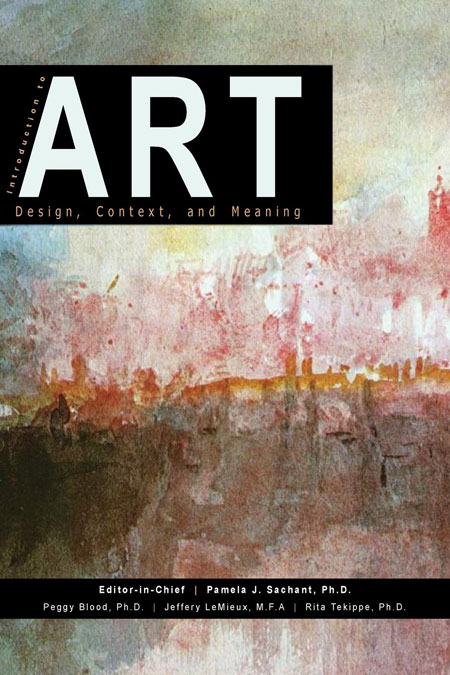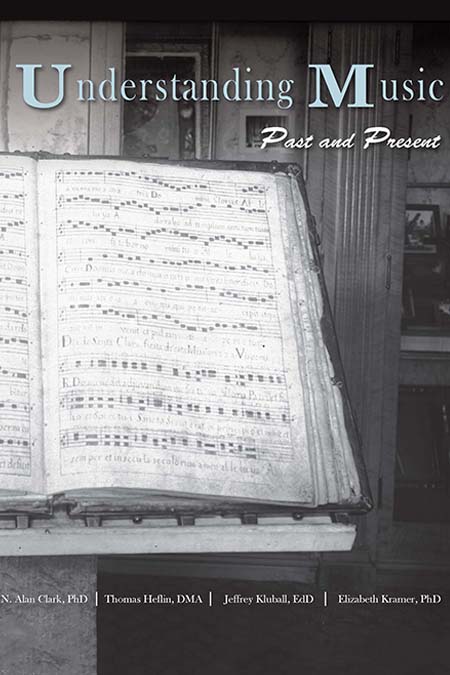

Peggy Blood, Ph.D.
Jeffery LeMieux, MFA
Rita Tekippe, Ph.D.
Introduction to Art: Design, Context, and Meaning offers a comprehensive introduction to the world of Art. Authored by four USG faculty members with advance degrees in the arts, this textbook offers up-to-date original scholarship. It includes over 400 high-quality images illustrating the history of art, its technical applications, and its many uses. Combining the best elements of both a traditional textbook and a reader, it introduces such issues in art as its meaning and purpose; its structure, material, and form; and its diverse effects on our lives. Its digital nature allows students to follow links to applicable sources and videos, expanding the students’ educational experiences beyond the textbook. Introduction to Art: Design, Context, and Meaning provides a new and free alternative to traditional textbooks, making it an invaluable resource in our modern age of technology and advancement.
1.1 Learning Outcomes
1.3 What is Visual Art?
1.4 Who is Considered an Artist? What Does It Mean to Be An Artist?
1.5 The Role of the Viewer
1.6 Why Do We Make Art?
1.7 Concepts Explored in Later Chapters
1.8 Before You Move On
2.1 Learning Outcomes
2.3 Art Specific Vocabulary
2.5 Form and Composition
2.6 Before You Move On
3.1 Learning Outcomes
3.3 Utility and Value of Materials
3.4 Precious Materials, Spolia, and Borrowed Glory
3.5 Liquidation of Treasures
3.6 Wood, Inlay, and Lacquer
3.7 Intrinsic Values and Enhanced Worth of Metals
3.8 Rare Materials and Prohibited Uses
3.9 Material Connotations of Class or Station
3.10 Before You Move On
4.1 Learning Outcomes
4.3 Formal or Critical Analysis
4.4 Types of Art
4.5 Styles of Art
4.6 Before You Move On
5.1 Learning Outcomes
5.3 Socio-Cultural Contexts
5.4 Symbolism and Iconography
5.5 Before You Move On
6.1 Learning Outcomes
6.4 Expression (Philosophical, Political, Religious, Personal)
6.7 Protest and Shock
6.8 Celebration and Commemoration
6.10 Information, Education, and Inspiration
6.11 Before You Move On
7.1 Learning Outcomes
7.3 Residential Needs
7.4 Community and Government
7.7 Before You Move On
8.1 Learning Outcomes
8.3 Individual vs Cultural Groups
8.4 Before You Move On
9.1 Learning Outcomes
9.3 Propaganda, Persuasion, Politics, and Power
9.4 Imagery of War
9.5 Before You Move On
10.1 Learning Outcomes
10.3 Exterior Ritual Spaces
10.4 The Sacred Interior
10.5 Masks and Ritual Behavior
10.6 Funerary Spaces and Grave Goods
10.7 Before You Move On
11.1 Learning Outcomes
11.3 Ethical Considerations in Making and Using Art
11.5 Ethical Considerations in the Collecting and Display of Art
11.6 Before You Move On
Please note that the file is large and may take several minutes to download.


© 2024 The University System of Georgia and the University of North Georgia.
UNG follows the section 508 Standards and WCAG 2.0 for web accessibility. If you require this content in another format, please send an email to the ADA Coordinator.
Use of military-themed imagery does not constitute endorsement by the U.S. Department of Defense.
Our Commitment To Our Students, Faculty, And StaffAt the University of North Georgia, we deeply value and uphold the cherished right of every American to freely express themselves. It is a hallmark of our history, our tradition, and permeates our culture. As a distinguished Senior Military College, with a legacy spanning over 150 years, we take great pride in our role of cultivating leaders who tirelessly defend these fundamental freedoms for all citizens. The legacy of our graduates in this regard is second to none.
As campus leaders, our primary responsibility is to cultivate an academic environment that ensures this exchange of ideas and the safety of our community. Across all five campuses, we are committed to fostering a welcoming atmosphere where individuals feel empowered to freely express themselves and engage in exploration and learning. However, it is essential that these rights are exercised in a manner that upholds our academic mission, preserves the safety of all, and is in accordance with our institutional policies, without unlawful behavior. This means breaking the law, harassment, intimidation, trespassing, violence, and other criminal acts will not be tolerated at the University of North Georgia.
Together, let's uphold the principles of respect, understanding, and civility as we equip our students to walk toward their purpose.